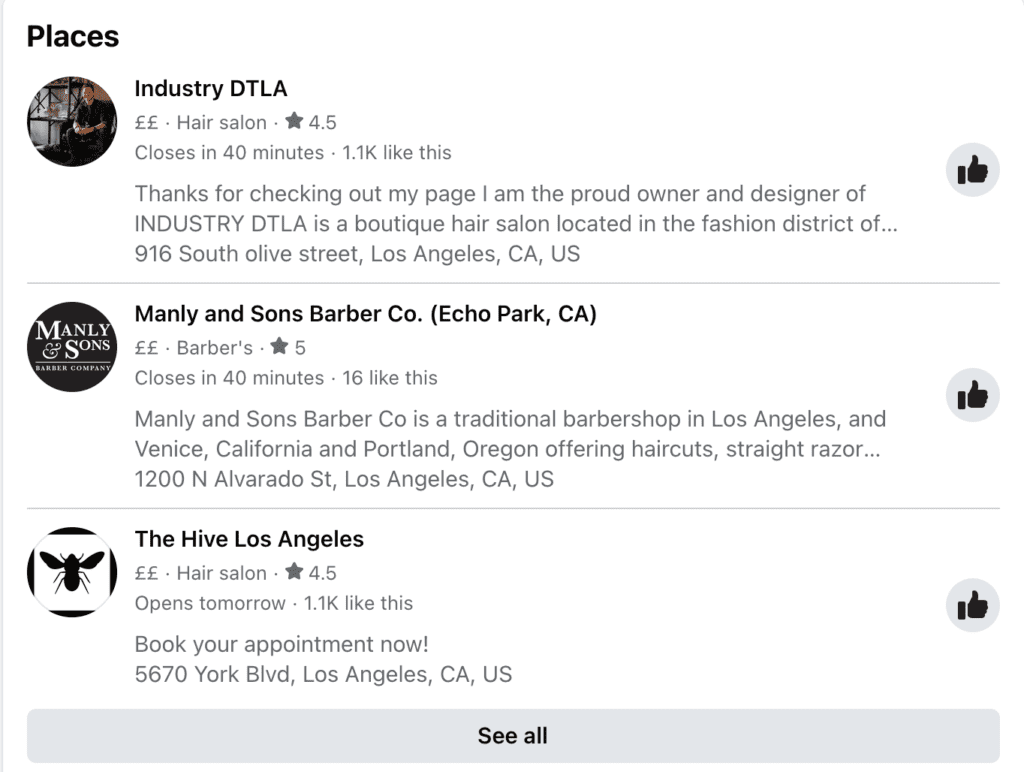How to Use Social Media Data To Improve Your Posts
written by John Hodgkinson | Author Tips and Tricks
April 30, 2023
There are 4.2 billion active social media users worldwide. That means if you’re looking to grow your audience, social media is the place to be. Creating engaging, high-quality posts is essential if you want to grow your social following. But, without the right insights, your efforts can be hit or miss. You can improve your […]
The post How to Use Social Media Data To Improve Your Posts appeared first on .

There are 4.2 billion active social media users worldwide. That means if you’re looking to grow your audience, social media is the place to be.
Creating engaging, high-quality posts is essential if you want to grow your social following. But, without the right insights, your efforts can be hit or miss.
You can improve your posts by analyzing social media data. When users interact online, they share information about themselves. The collected metadata can help marketers target a range of specific areas, including locations and interests.
And, when you post on your favorite platforms, you can check to see whether your content is hitting the mark. For example, you can look at your reach and engagement score.
When you know your social media audience, you can improve the quality of your posts. Here are a few ways you can use data to maximize your reach.
Collecting Social Media Data
Before you start working on your posts, you’ll need to collect and analyze your social media data. How? The biggest social media platforms come with built-in insights, including Facebook, Twitter, Instagram, and YouTube.
If you’re posting to multiple social media platforms, keeping track of this data can be difficult. But, there are a range of social media analytics tools to choose from. These software solutions let you view all your data in one place to gain a bigger picture of your target demographic.

You can use these insights to learn more about your audience. What are they commenting on, liking, and sharing? Which posts are converting to sales or leads?
Your social media posts can be free or come in the form of paid ads. It’s possible and important to compare the results of both.
Just remember, you’ll get a broad overview of your audience, but you won’t have access to ALL the data. Some internet users prefer to keep their information private. They could have tight settings on their browser to block cookies, or their location data could be hidden.
For example, some people use VPN (virtual private network) software like Nord VPN to disguise their location. VPNs aren’t uncommon in countries with social media restrictions, and those wanting to view content designed for a US audience can find a VPN beneficial. However, companies like Nord VPN offer a service that could impact your ability to gauge your analytics properly.
That’s why it’s important to build some wiggle room into your findings and not consider it the end-all-be-all.
Create More Engaging Posts
By analyzing your social media data, you can create more engaging posts and target your audience in a way they’ll respond.
For example, if you have an ecommerce store and your followers are interacting with posts that showcase featured products or special offers, these are areas you can focus on. Or, if your audience likes funny memes, give them more of what they want.
Your strategy may vary depending on whether you want likes, shares, comments, or website visitors. If you’re not sure what works best, you can try uploading a few different posts before checking your reports to see what’s a hit and what’s a miss.
Interacting with your followers is a smart way to boost engagement. Replying to comments and asking questions can increase your views.
For those active on Instagram, you can engage your fans with tags and a unique hashtag.
Here’s an example from Earlybird’s Instagram feed. The brand has an app designed for gifting money to children. The post displayed below has tags for selected followers, offering them a challenge to participate in. It also includes a unique and memorable hashtag with #BabyWealth, and a limited-time discount for new sign-ups.
Combine these features with a customized graphic, and you’ve got an Insta-post that’s built for engagement.

Plan Your Social Workflows
Social data can help you become more organized. If you’re serious about building a strong social media presence, you should commit to a posting schedule.
You can use your data to create goals for your brand. And, because you can access your reports at any time, your goals can change based on new information.
Once you know what you want from your social media posts, it’s time to create a workflow. A social media workflow is a breakdown of the steps you need to take to achieve your goal.
If you’re working in a team, having a clear workflow means anyone can upload a quality post. Because everyone has to go through the workflow stages, the posts will be consistent. As a result, you’ll be more likely to achieve your goals.
What does a social media workflow look like? Before you start, you should have used your data to learn about your audience and set a specific goal. For example, your goal could be to get more followers or improve interaction.
Step 1: Brainstorm content styles and ideas
Step 2: Create a content schedule
Step 3: Find resources like statistics and images
Step 4: Write the content and design the graphics
Step 5: Edit the post
Step 6: Have someone else check the post
Step 7: Schedule the post
Step 8: Promote the post and share it with your audience.
Step 9: Respond to post comments
Step 10: Analyze the data to determine whether the post was successful
If your company is big enough, these steps might be allocated to different staff members. If it’s a team effort, you’ll need to be clear about who is responsible for each workflow stage.
Support Automated Processes
Social media managers use data to plan campaigns and track their results. Social data can help marketers decide which processes can be automated. They can also check whether automation is having a positive impact.
Marketing automation can save you time and money while creating a better user experience. You can say goodbye to mundane, repetitive tasks and focus your efforts on content creation.

For example, analytics may show you that your most interactive audience is located in a different timezone. You can use automation software to publish your posts at a time when your followers will be most active. You can schedule multiple posts at once, so sticking to your posting schedule will be a breeze.
If you’re active on Twitter, automation software can retweet your most popular posts. You can set the frequency, giving your Tweets the chance to reach more people.
Don’t forget, communicating with your fans is important. Good customer service can help you turn leads into sales. If you’re feeling overwhelmed by messages on Facebook, consider using a Messenger Bot. These clever chatbots respond to inquiries on your behalf.
You can collect data from your automated Messenger conversations or you can use customer feedback tools like Qualaroo to learn about your customers and improve your service.
Use Content from Your Website to Enhance Posts
Your blog and social media pages can support each other. You can combine the data from your website and social channels to achieve bigger digital marketing goals. When you merge data from different sources, it’s called data integration.
Social media posts need to be short and sweet, but you can direct readers to your website for more. For example, include a link to a comprehensive blog post or you can direct readers to a featured product they can purchase.
Having different ways for your followers to connect with your company can help to improve brand recognition and loyalty.

You can check your data to see how many people are finding your website via social media. If you don’t already have access to this information, you can sign up for Google Analytics. It’s a free tool that shows you reports based on who is visiting your website and how they got there.
Writing content can be time-consuming, especially when you’re trying to manage a website and social media pages. If you’re working in a team, you can collaborate on projects with Google Docs. Then, you can use a program like Wordable to publish straight from Google Docs to your website.
The effort can be worth it when you give your social media followers more of the content they’re looking for. You’ll be able to drive traffic to your website and keep your fans happy with richer posts.
Discover More Relevant Topics With Keyword Research
You’ve probably thought about SEO (search engine optimization) for your website, but what about your social media pages? Keyword research can make a difference in your social media marketing.
Let’s say you’re a hairdresser in Los Angeles. You should use the words “hairdresser” and “Los Angeles” in your social media content. You can also add variations of these.
Depending on the platform, these can be part of the copy or hashtags.
Why does this matter? These days, more people use social media to find what they’re looking for. It could be a local business, a product review, or a topic discussion.
Keywords can help you stand out in these searches. Here’s an example from Facebook using the term “hairdresser Los Angeles”:

Plus, Google will index your social media posts. So, just like your website, the keywords you choose can have a direct impact on your traffic.
There are different ways to find relevant keywords. If you’re using Facebook or Twitter, you can start an ad campaign and note any suggested keywords.
For Instagram, you can look for popular and niche hashtags that your target demographic interacts with.
If you’re a video blogger, YouTube has a convenient search tool. The company uses data from previous searches to make predictions. You can use these search predictions to create a list of keywords for your own video content.
Here’s an example using the search term “web design.” Some of the top keywords include “web design tutorial,” “web design course,” and “web design trends 2022.”

If you’re including keywords in your copy, make sure they sound organic. You won’t want to lose followers due to poor-quality content that’s stuffed with irrelevant keywords.
Keep tracking your analytics to see how well posts are performing using specific keywords.
Use Social Media Data to Improve the Quality of Your Posts
Is social media part of your marketing mix? High-quality posts will keep your existing followers happy and help you grow your audience.
You can access data from most social media platforms. With the information you learn, it’s possible to create more engaging posts and plan workflows that your whole team can work through.
Analyzing data can support automated processes and help you invest time in the right areas. For example, you can use chatbots and scheduling tools to reduce your workload.
Add relevant links from your website to your posts and research keywords to target the right people. Whether it’s Facebook, Twitter, Instagram, or YouTube, finding relevant keywords doesn’t have to be difficult.
When you analyze your data and create goals based on the behavior of your audience, you can create higher-quality posts.

The post How to Use Social Media Data To Improve Your Posts appeared first on .
